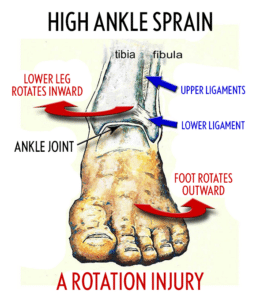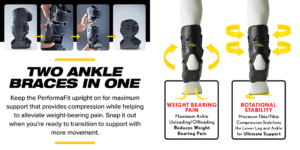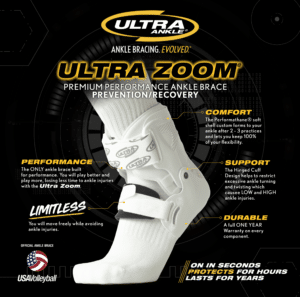Introduction
As an athlete, your body endures intense physical demands daily—whether it’s training, competing, or simply staying active. Over time, these demands take a toll, leading to muscle fatigue, joint deterioration, and potential injuries. Even after recovering from an injury, maintaining a proactive recovery routine is crucial to staying in peak condition and preventing future setbacks.
Athletic trainers and sports medicine professionals emphasize the importance of daily injury maintenance to manage the ongoing wear and tear that comes with competition. This approach not only helps athletes stay in the game but also enhances long-term performance and longevity.
One of the simplest yet most effective recovery methods is cold therapy, which helps reduce inflammation, relieve pain, and speed up recovery. However, traditional icing methods—grabbing ice from the freezer, filling plastic bags, and dealing with the mess—can often feel like a hassle. That’s where the Ultra CHILL® cryocompression sleeve from Ultra Ankle® comes in. Designed for convenience and effectiveness, it provides an easy way to incorporate cold therapy and compression into your daily routine.
In this article, we’ll explore the importance of injury recovery maintenance, the benefits of cold therapy with compression, and how the Ultra CHILL cryocompression sleeve can simplify your recovery process.
1. Why a Daily Injury Maintenance Routine is Crucial
Athletes often focus on performance, pushing their bodies to the limit during training and competition. However, maintaining peak performance isn’t just about working harder—it’s about working smarter. A consistent injury maintenance routine plays a critical role in staying healthy, reducing downtime, and enhancing overall athletic longevity.
Preventative Maintenance is the Key
Many injuries, especially recurring ones like ankle sprains, stem from accumulated wear and tear. By implementing a proactive maintenance routine, athletes can address minor issues before they escalate into serious problems. Daily cold therapy, for example, helps manage microtears in ligaments and muscles, preventing inflammation that could lead to pain, swelling, and tightness in the muscle or joint
Improved Performance and Recovery
When athletes ignore proper recovery, they often experience stiffness, soreness, and decreased mobility. These factors can impact training effectiveness and game-day performance. A structured maintenance plan, including cold therapy and proper stretching, allows athletes to stay agile and recover faster between sessions.
Longevity in Sports
Every athlete dreams of a long and successful career, but without proper recovery habits, persistent injuries can shorten that journey. Developing a disciplined approach to injury maintenance ensures that athletes can continue performing at their best, season after season.
Key takeaway: Injury maintenance is an ongoing process that requires commitment. Incorporating tools like the Ultra CHILL cryocompression sleeve into your routine can make daily recovery more efficient and effective.
2. The Benefits of Cold Therapy for Injury Recovery
Cold therapy, also known as cryotherapy, is a widely recommended treatment for athletes recovering from injuries or managing daily muscle and joint wear and tear. Whether you’re dealing with a past ankle injury or simply looking to prevent soreness after an intense workout, incorporating cold therapy into your routine can provide significant benefits.
Reduces Inflammation and Swelling
After strenuous physical activity, small tears in muscles and ligaments can lead to inflammation and swelling. Applying cold therapy with compression constricts blood vessels, which helps to reduce swelling and minimize discomfort. Cold combined with compression is the most effective way of managing post workout swelling and pain. According to the American Orthopaedic Society for Sports Medicine, regular cold therapy can aid in controlling post-exercise inflammation, helping athletes recover more efficiently.
Relieves Pain Naturally
Cold therapy combined with compression is a natural pain reliever that works by numbing the affected area and temporarily reducing blood flow which manages swelling and pain. This effect helps athletes manage post-workout soreness without the need for medication. The Mayo Clinic suggests that icing can be an effective way to alleviate joint pain and stiffness, especially in athletes recovering from repetitive injuries.
Prevents Further Injury
Using cold therapy with compression immediately after training sessions can prevent minor injuries from developing into more serious issues. By reducing tissue breakdown and limiting fluid buildup, athletes can keep their ankles in top condition and avoid recurring problems.
Supports Faster Recovery
Athletes who consistently use cold therapy as part of their maintenance routine report faster recovery times between workouts. Research published in the Journal of Athletic Training highlights that cryotherapy can enhance muscle recovery by reducing delayed-onset muscle soreness (DOMS) and improving overall function.
Key takeaway: Regular cold therapy with compression helps athletes stay in peak condition by reducing pain, preventing swelling, and supporting faster recovery. The Ultra CHILL cryocompression sleeve makes it easier than ever to incorporate this essential recovery method into your daily routine.
3. Ultra CHILL: The Easy Solution for Daily Cold Therapy Combined with Ankle Compression
While cold therapy with compression is essential for recovery, traditional methods like ice packs and frozen wraps can be inconvenient, messy and only provide cold but no compression The Ultra CHILL cryocompression sleeve from Ultra Ankle offers a hassle-free, effective solution that simplifies your daily injury maintenance routine by offering both Cold Therapy and Compression which is much more effective than cold therapy alone at managing swelling and pain
Convenience Without the Mess
One of the biggest challenges with traditional icing methods is the preparation and cleanup—finding ice, filling a bag, and dealing with leaks. The Ultra CHILL sleeve eliminates these issues with a simple slide-on design that provides consistent cold therapy with ankle compression without the mess. Just place the sleeve in the freezer for two hours, wear it for the recommended 30 minutes, and put it back in the freezer for your next use.
Combining Compression and Cold Therapy
Unlike standard ice packs, the Ultra CHILL sleeve delivers cryocompression therapy, which combines the benefits of cold treatment with gentle compression. This dual-action approach helps to:
- Reduce swelling more effectively by applying consistent pressure.
- Enhance blood flow and circulation post-icing.
- Ensure a snug fit for targeted relief where it’s needed most.
Designed for Active Lifestyles
Whether you’re coming off the field after a game or finishing an intense training session, Ultra CHILL fits seamlessly into your routine. Its flexible and lightweight design allows for comfortable wear, ensuring you can go about your post-practice recovery without restriction.
How to Use the Ultra CHILL Cryocompression Sleeve
- Place the sleeve in the freezer for at least 2 hours before use.
- Slide it onto your ankle immediately after practice or competition.
- Wear for the recommended 30 minutes to achieve optimal results.
- Return the sleeve to the freezer for future use.
Key takeaway: The Ultra CHILL cryocompression sleeve is an easy, effective, and convenient way to maintain your injury recovery routine without the hassle of traditional icing methods.
4. When and How to Incorporate Cold Therapy
To maximize the benefits of cold therapy with compression and keep your ankles in top shape, it’s important to incorporate it into your daily routine strategically. Whether you’re recovering from a past injury or looking to prevent future issues, knowing when and how to use cold therapy can make a significant difference in your performance and overall well-being.
Post-Workout Recovery
Immediately after a practice or game, your muscles and joints experience microtears and inflammation due to intense physical activity. Applying the Ultra CHILL cryocompression sleeve post-workout helps to:
- Reduce swelling and inflammation before it becomes a bigger issue.
- Minimize soreness and stiffness, allowing for a quicker recovery.
- Improve mobility and flexibility for the next day’s training session.
Tip: For best results, apply the sleeve within 30 minutes after finishing your workout and wear it for the recommended 30 minutes. For better results apply the Ultra Chill for 30 on the ankle and 30 minutes off. Continue this routine for as many cycles as necessary to keep your pain and swelling in check.
Before Bed for Overnight Recovery
Many athletes experience increased stiffness,soreness, and swelling in the morning due to overnight inflammation. Applying cold therapy with compression before bed can:
- Reduce overnight swelling and promote better circulation.
- Help you wake up feeling refreshed with improved joint mobility.
- Prevent stiffness that could affect performance the following day.
Tip: Make icing a part of your nighttime routine to ensure consistent recovery while you sleep.
After Minor Sprains or Strains
Even minor ankle sprains can impact performance if not properly managed. Cold therapy with compression can provide immediate relief and help control swelling in the crucial early stages of recovery. The Ultra CHILL sleeve offers a convenient way to address minor injuries without the hassle of traditional ice packs.
Consistency is Key
Cold therapy works best when used regularly as part of your injury maintenance routine. Whether you’re managing an old injury or preventing future ones, committing to a consistent recovery plan will help keep you in the game longer.
Key takeaway: Incorporate cold therapy with compression into your post-workout routine, before bed, and after minor injuries to keep your ankles healthy and competition-ready.
5. Beyond Cold Therapy: Additional Injury Maintenance Tips
While cold therapy is an essential part of an athlete’s recovery routine, a well-rounded injury maintenance plan includes more than just icing. To stay in peak condition and prevent recurring injuries, athletes should adopt a holistic approach to recovery that includes strengthening, stretching, and proper nutrition.
Strengthening and Stretching Exercises
Building strength and maintaining flexibility are crucial for preventing injuries and improving overall performance. Incorporating a regular routine of ankle-strengthening exercises and dynamic stretching can help:
- Improve joint stability and support.
- Enhance range of motion and flexibility.
- Reduce the risk of re-injury by reinforcing weakened areas.
Tip: Consult with your athletic trainer or sports medicine professional for exercises tailored to your specific needs. Common exercises may include resistance band work, balance drills, and calf stretches.
Proper Nutrition and Hydration
What you put into your body directly impacts your recovery and performance. Eating a well-balanced diet rich in anti-inflammatory foods and staying hydrated can support injury healing and reduce inflammation. Key nutrients to focus on include:
- Protein: Helps repair damaged tissues and supports muscle recovery.
- Omega-3 fatty acids: Found in foods like salmon and flaxseeds, these help combat inflammation.
- Vitamins and minerals: Nutrients like vitamin C, zinc, and magnesium play a crucial role in tissue repair and joint health.
Tip: Drinking plenty of water throughout the day ensures optimal hydration, which helps maintain joint lubrication and muscle function.
Rest and Recovery Days
Pushing your body too hard without proper rest can lead to overuse injuries and decreased performance. Scheduling regular rest and recovery days allows the body to heal and rebuild, ensuring long-term durability and peak athletic performance.
Tip: Listen to your body—if you’re experiencing persistent pain or discomfort, take a break and allow time for recovery.
Professional Guidance
Every athlete’s body is different, which is why it’s important to work with professionals such as athletic trainers, physical therapists, or sports medicine specialists to create a personalized injury maintenance plan. They can provide expert advice on recovery techniques, injury prevention strategies, and performance optimization.
Key takeaway: Injury maintenance goes beyond icing—combining strength training, proper nutrition, adequate rest, and professional guidance will help athletes stay in the game longer and perform at their best.
Conclusion
Staying at the top of your game requires more than just skill and dedication—it demands a proactive approach to injury maintenance and recovery. Even after an injury has fully healed, daily recovery routines are essential to managing the wear and tear that comes with intense physical activity. Incorporating cold therapy with compression, strength training, proper nutrition, and adequate rest into your routine can make a significant difference in your long-term performance and overall well-being.
The Ultra CHILL cryocompression sleeve from Ultra Ankle offers a simple, effective, and convenient solution to help athletes maintain their injury recovery routine without the hassle of traditional icing methods. Whether you’re recovering from a past ankle injury or looking to prevent future ones, the Ultra CHILL sleeve provides the cold compression therapy needed to reduce swelling, relieve pain, and keep you competition-ready.
Don’t wait until an injury sidelines you—take charge of your recovery today. Get your Ultra CHILL cryocompression sleeve now and make cold therapy an effortless part of your daily routine.


